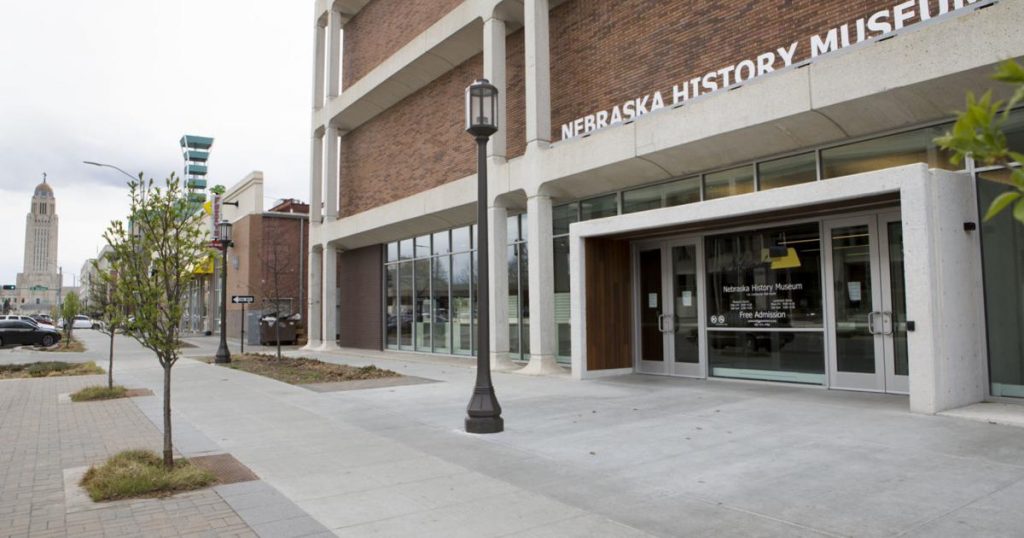
Over Spring Break, I had the opportunity to visit the Nebraska History Museum for the first time in many years. Growing up in Lincoln, Nebraska, I spent a lot of my summers exploring the Nebraska History Museum. However, since as long as I can remember, the museum has always struggled in getting visitors and producing quality exhibits. Most of my encounters at the museum consisted of hearing about exciting titles of exhibits in the newspaper only to discover that the actual exhibit never met expectations.
The Nebraska History Museum is located across from the state capital building in downtown Lincoln, Nebraska. Consisting of three floors, the first floor is dedicated to permanent exhibits, the second floor is for traveling and temporary exhibits and the third and final floor is used for community engagement.
On my most recent visit, I encountered a temporary exhibit titled “Collecting Moments- 2020 Nebraska. Located on the second floor, the exhibit is placed in a hallway between the restrooms, a more permanent exhibit and digital learning class rooms. The names of the curators are not included on the exhibit nor is there a bibliography present. Both the bibliographical and curatorial information was also not present on the museum’s website.
Though the Nebraska History Museum has historically struggled in engaging their audience in the exhibits by the Nebraska State Historical Society, the museum’s new temporary exhibit, “Collecting Moments- 2020 in Nebraska” successfully incorporates recent history into the lives of Nebraskans as well as demonstrates a promising step forward in the meaning making process for museum goers at the institution. By using different modes of materials and media from the 2022 Covid-19 pandemic, the Nebraska Historical Society is able to effectively communicate the controversies and protests surrounding the pandemic.
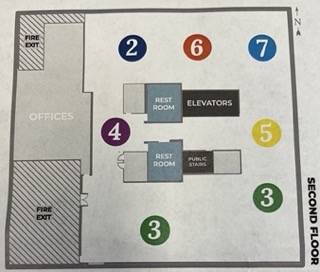
As indicated by the map above, the traffic flow of the exhibit occurs naturally when the viewers move from the large exhibit next to it (number 3 on the map) and the digital class rooms.
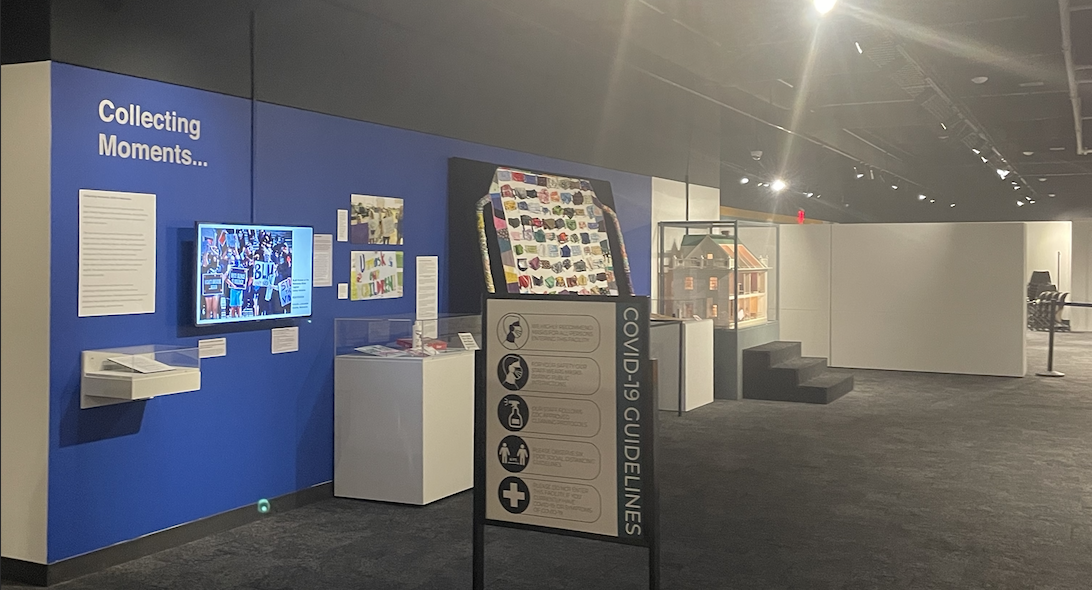
“Collecting Moments- 2020 in Nebraska ” is an exhibit presented by the Nebraska Historical society that displays collected photos materials of Nebraskans and their experiences during the 2019-2022 Covid-19 Pandemic. As part of a continuing initiative to encourage Nebraskans to collect pieces of recent history, the exhibit frames the history of the pandemic as way to view history as something that occurs every day and effects every one of us. The exhibit is indicated by a blue wall. This blue wall is noted by the exhibit to be the Panetone color of the year for 2022, Classic Blue, and is supposed to represent the “enduring spirit of Americans in times of uncertainty (like the pandemic years). At the front of the exhibit the first plaques describe how the pandemic affected people of all races, religions, and genders within Nebraska. Below the plaque is an empty staging box that lists the ways in which the audience and collect and donate materials for the Museum’s ongoing mission to document the pandemic. The digital monitors on the wall play a constant slide show of photographs depicting iconic images of the pandemic in Nebraska. Some of these photos include images of anti-masking protests, BLM protests, and support rallies for healthcare workers.
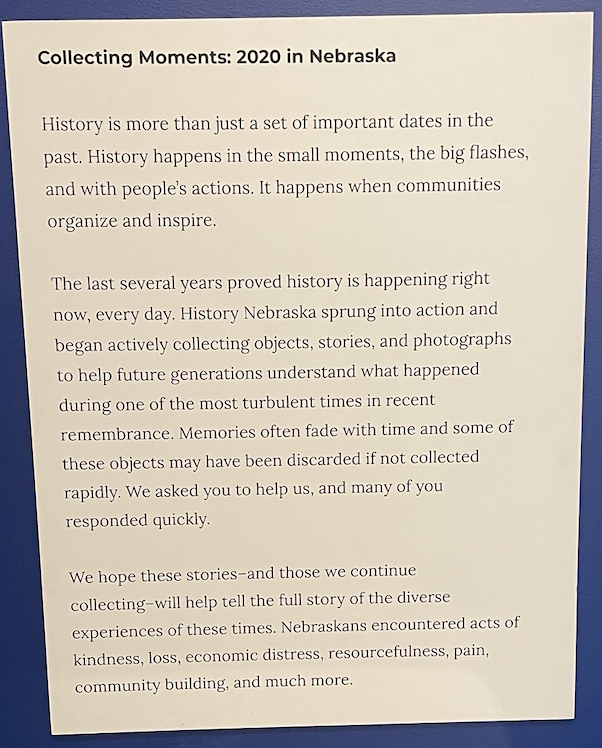

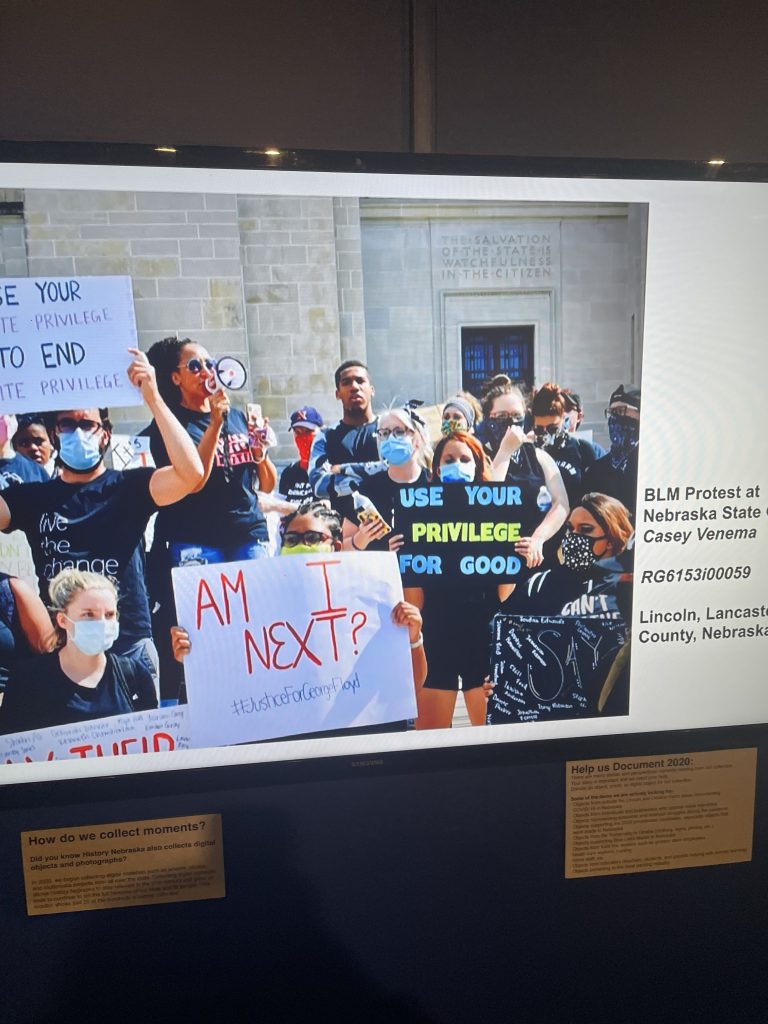
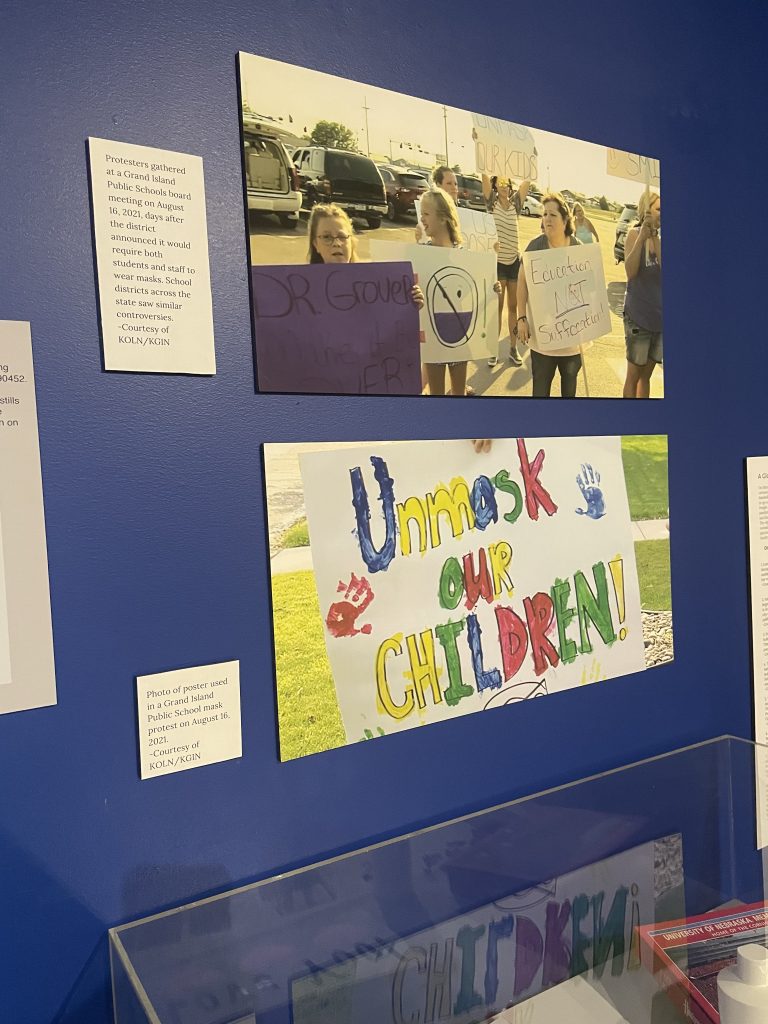
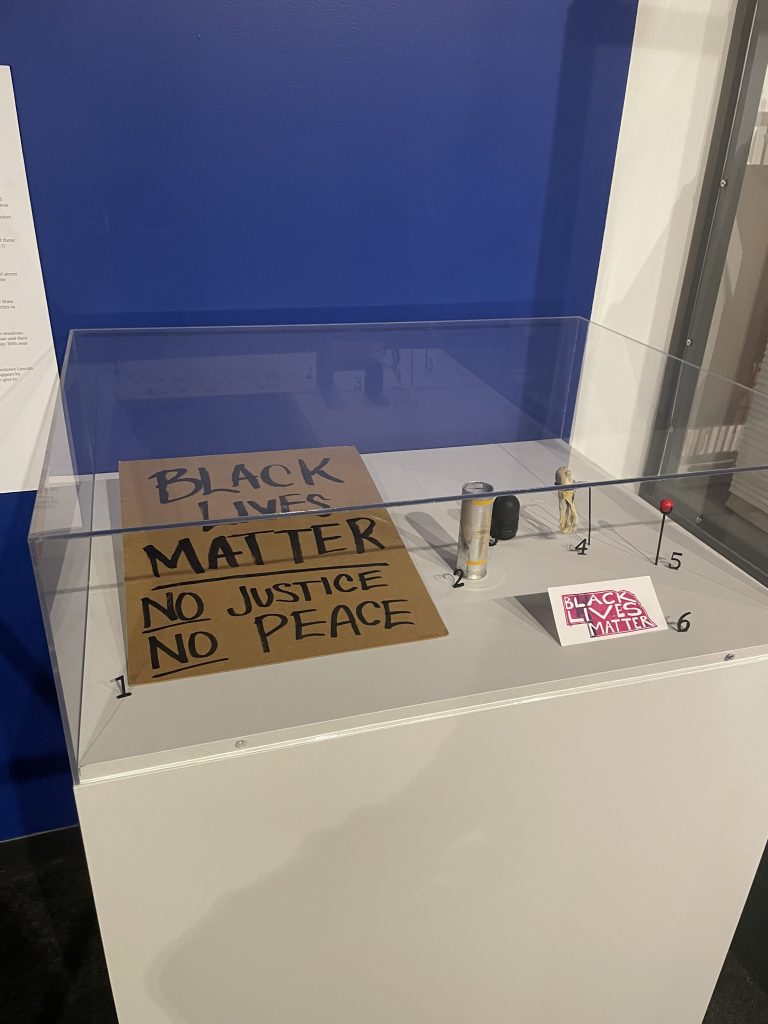
In the middle of the wall a large quilt made of masks by the Nebraska Quilting Association and sits as the focal point of the entire exhibit. Flanked by two glass cases, the case on the left held signs that individuals showed their loved ones in hospital quarantine and bottles of hand sanitizer that were made by local distilleries. The case on the right held BLM protest signs, pieces of rubber bullets, sandbags, pepper spray and broken tear gas canisters.

Overall, I was really impressed that the museum even attempted to display an exhibit dedicated to the pandemic and incorporated contemporary historical practices into the display. Many individuals in Nebraska rejected the idea of Covid-19 during the pandemic and engaged in a significant amount of racial and political violence from 2019-2022. By framing the pandemic as something that reached every Nebraskan, the exhibit curators were able to reach an audience of people that would normally be apprehensive to discussing the pandemic. In addition, the exhibit detailed iconic shared memories that Nebraskans would remember (such as socially distanced popular annual sports events in Nebraska). This only added to the feeling of engagement among the audience members. The exhibit discusses multiple facets of the pandemic. Ranging from economic crisis to commenting on the large loss of life during the pandemic, the exhibits touches on the economic, political and racial aspects of the period. Visually, though the exhibit was only a section of a hallway, the blue wall and the striking image of the full size quilt drew my attention almost immediately. The exhibit was very easy to navigate from left to right. The amount of text was appropriate for the amount of objects and did not take away from the experience. Rather the text aided in explaining why such items were chosen and how the viewer could contribute to the growing collection of pandemic artifacts.
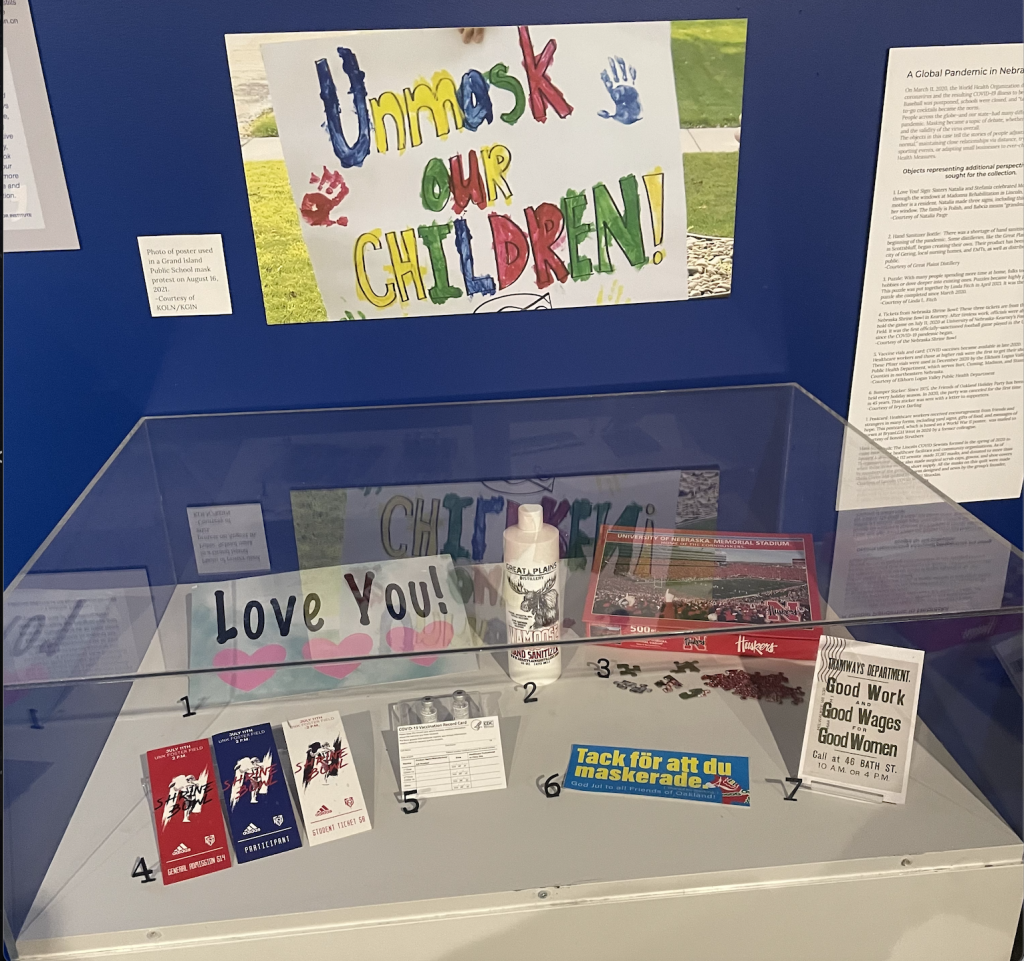
Collectively the Nebraska History Museum succeeds in capturing the viewer’s attention through the presentation of iconic images and materials that were symbolic of the Covid-19 pandemic. More importantly, the exhibit encourages the viewers to engage in the meaning making process by asking museum goers to collect and donate items that they deem to be symbolic of the pandemic. By including the local community in document such history, the institution establishes a better sense of shared authority with the communities that the museum represents.
However, despite the exhibit’s strong ability to connect the audience to historical documentation of real world events, the placement and overall tone of the exhibit alludes to the difficulty in discussing the pandemic in a conservative state. The exhibit itself is placed almost as an after thought next to a doll house (that is part of another exhibit) and the restrooms. While the museum’s volume level was relatively quiet throughout, the placement of the exhibit near the busy restrooms took away from the experience and my partner and I found it very distracting. It is definitely possible for viewers to entirely miss the exhibit if they do not walk all the way around the second floor.
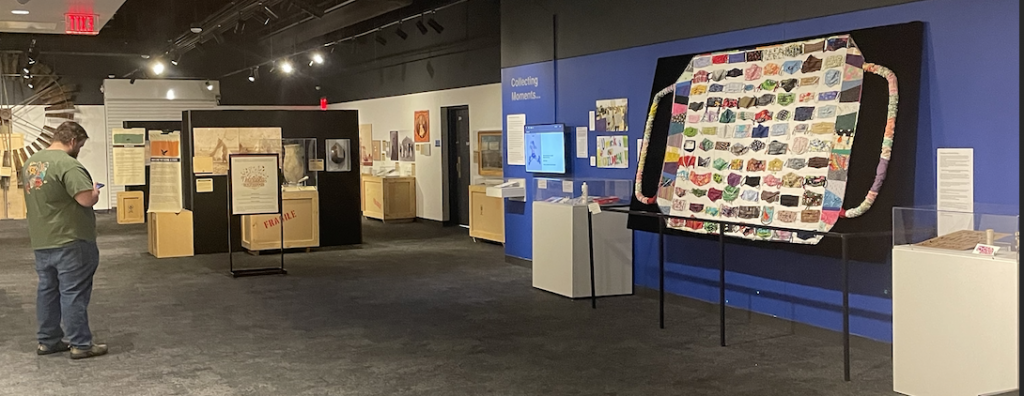
There is also bias present in the exhibit as well. The language used on the signage does not take a stance with the political protests or the anti-mask movement that was prominent in the state at the time. Facts about the racial violence and attacks that occurred in the state were also not mentioned. In a way it seems as though the museum held back on the presentation of facts on the exhibit in order to garner local support for the exhibit. As Mexican-American woman and native Nebraskan, I also would have liked to see more information on the political climate during covid and representation of the vibrant Mexican-American community in Nebraska to be included.
Leave a Reply